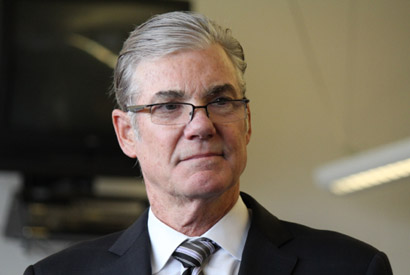State education chief unveils report to guide new generation of California schools
California should refocus on updating and replacing aging school buildings with schools designed to be more environmentally friendly and better suited to the needs of the next generation of students, according to a new UC Berkeley report released today by the top state schools chief.

July 25, 2012
SACRAMENTO — As the need for new school construction slows over the next decade, California should refocus on updating and replacing aging school buildings with schools designed to be more environmentally friendly and better suited to the needs of the next generation of students, according to a new UC Berkeley report released today by Superintendent of Public Instruction Tom Torlakson.
The UC Berkeley Center for Cities & Schools prepared the report, titled “California’s K-12 Educational Infrastructure Investments: Leveraging the State’s Role for Quality School Facilities in Sustainable Communities.” The full report is available online.
In the report, authors analyze California’s K-12 infrastructure policies, regulations, and funding patterns before providing recommendations that re-envision the state’s traditional construction role in K-12 infrastructure as one of modernizing facilities, supporting 21st Century education, and contributing to more sustainable communities.
“California has a lot to learn about building the schools of the future — and the time to get started is now,” Torlakson said. “The way we build and maintain schools over the next generation will of course make a huge difference to our 6.3 million public school students and to the teachers and school employees who serve them. But our schools matter in other ways as well: as community centers and leaders in sustainability. That means that every dollar we invest in our school facilities is a dollar that can change the future of our state.”
Californians have invested about $118 billion from both state and local sources in school infrastructure since the 1998 School Facilities Program went into effect. Torlakson co-authored the 1998 bond measure, which passed with more than 60 percent of the statewide vote. The UC Berkeley report finds that a similar amount—about $117 billion from all sources, including local and state — will be needed over the next decade to address the need for new and updated schools, eliminate the deferred maintenance backlog, and allow for preventative maintenance.
“Californians all across the state know the key role our schools play in our state’s future, and they have supported them again and again,” said Torlakson, noting that better than two-thirds of local school bond measures passed in the June 2012 election. “I believe they will be with us again, whether it be locally, on the November ballot or on a 2014 bond measure.”
The report recognizes the need for new minimum standards for California’s schools in using up-to-date technology, allowing for physical health and fitness, and preparing students for career and college. The authors also recommend that all future school projects meet green building criteria to hold operating costs down and serve as centerpieces of sustainable communities.
Torlakson unveiled the report at a news conference at Oakland Unified School District’s La Escuelita Education Center today. He was joined by:
- Oakland Unified School District Board President Jody London;
- Oakland Unified School District Superintendent Tony Smith;
- Bay Area Council Vice President for Public Policy Linda Galliher;
- Jeff Vincent, Ph.D., deputy director of the UC Berkeley Center for Cities & Schools and lead author of the report; and
- Cesar Diaz, legislative director of the State Building and Construction Trades Council of California.
Diaz also co-chaired Torlakson’s Schools of the Future initiative, which first laid out many of the needs and potential solutions for bringing California’s schools up to date and ready to move into a changing future.
The mission of the Center for Cities & Schools is to promote – through action, policy and technical assistance – high-quality education as an essential component of urban and metropolitan areas to create equitable, healthy, and sustainable communities. More information can be found online at http://citiesandschools.berkeley.edu/.